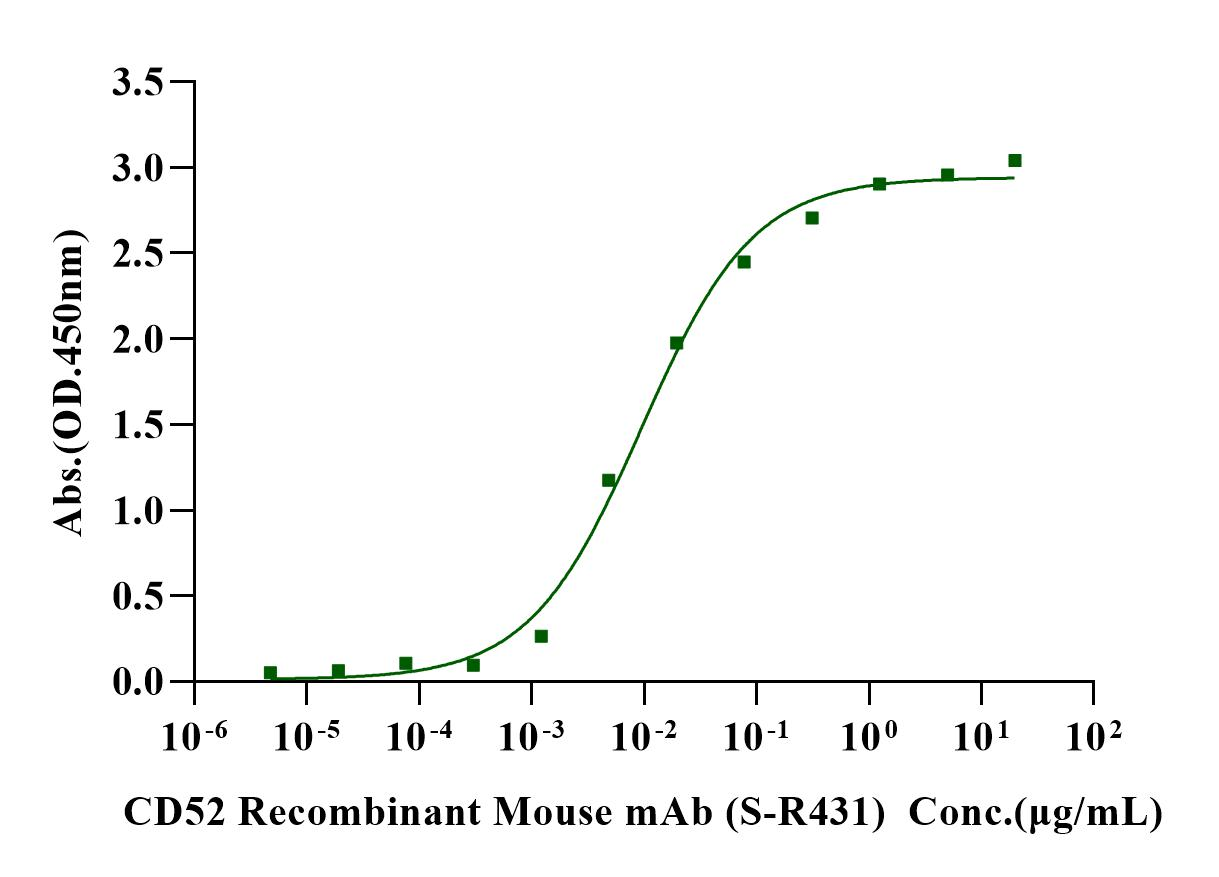Gly25-Ser36, with C-terminal human IgG1 Fc &Avi tag GQNDTSQTSSPSIEGRMDPKSSDKTHTCPPCPAPELLGGPSVFLFPPKPKDTLMISRTPEVTCVVVDVSHEDPEVKFNWYVDGVEVHNAKTKPREEQYNSTYRVVSVLTVLHQDWLNGKEYKCKVSNKALPAPIEKTISKAKGQPREPQVYTLPPSRDELTKNQVSLTCLVKGFYPSDIAVEWESNGQPENNYKTTPPVLDSDGSFFLYSKLTVDKSRWQQGNVFSCSVMHEALHNHYTQKSLSLSPGKGLNDIFEAQKIEWHE
35-43kDa
Reconstitute at 0.1-1 mg/ml according to the size in ultrapure water after rapid centrifugation.
1. Koyama K. et al. (2009) Functional aspects of CD52 in reproduction. J Reprod Immunol. 83(1-2): 56-59. 2. Morris, P.J. and N.K. Russell (2006) Transplantation 81:1361. 3. Redpath, S. et al. (1998) Immunology 93:595. 4. Hardiyanto, L. et al. (2012) J. Reprod. Immunol. 94:142.
CD52, also known as CAMPATH-1 antigen, HE5, and gp20, is a cell surface glycoprotein that can be targeted to induce immune suppression by complement-mediated cell lysis. CD52 is a GPI-anchored protein present in lymphocytes and male reproductive tissues (mrt) including mature sperm and seminal plasma. It has been shown that mrt-CD52 is synthesized in epithelial cells of the epididymis and vas deferens, but not in the testis. The mrt-CD52 is transported to mature sperm during sperm transition in the male reproductive tract. Lymphocyte CD52 functions to stimulate suppressor T cell induction, while mrt-CD52 is associated with seminogelin and involved in clot formation and liquefaction of semen. It protects sperm against anti-sperm antibodies by binding to C1q and inhibiting complement activation.

1μg (R: reducing conditions, N: non-reducing conditions).

Immobilized Biotinylated CD52 Fc&Avi Tag Protein, Human (Cat. No. UA010691) at 2 μg/mL on Streptavidin precoated (0.5μg/well) plate, can bind CD52 Recombinant Mouse mAb (S-R431) (Cat. No. S0B0685) with EC50 of 6.88-13.26ng/ml.